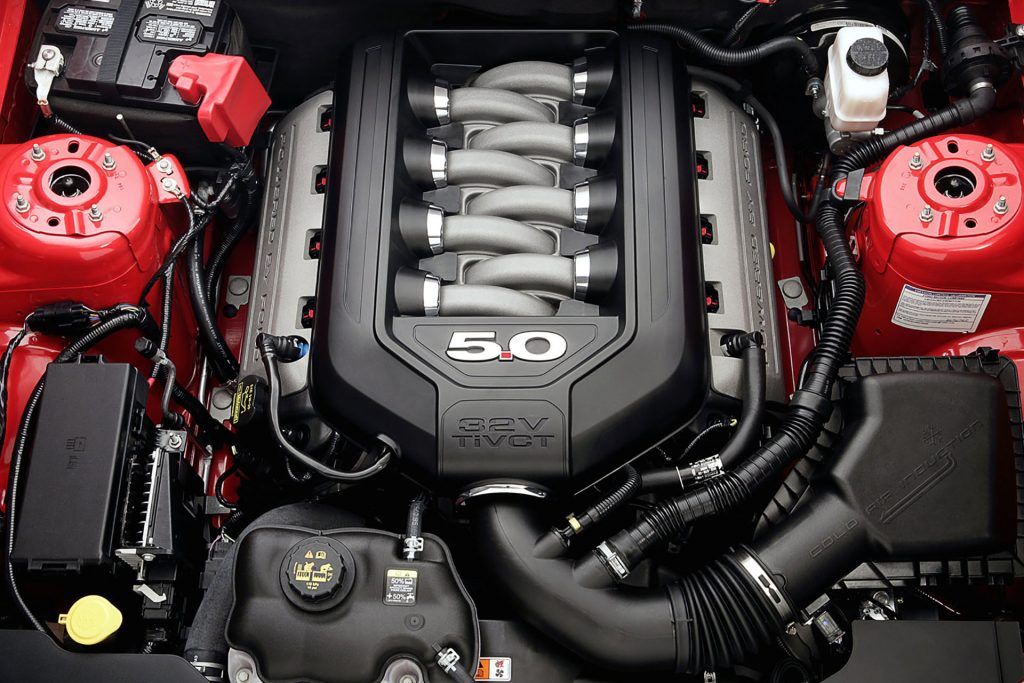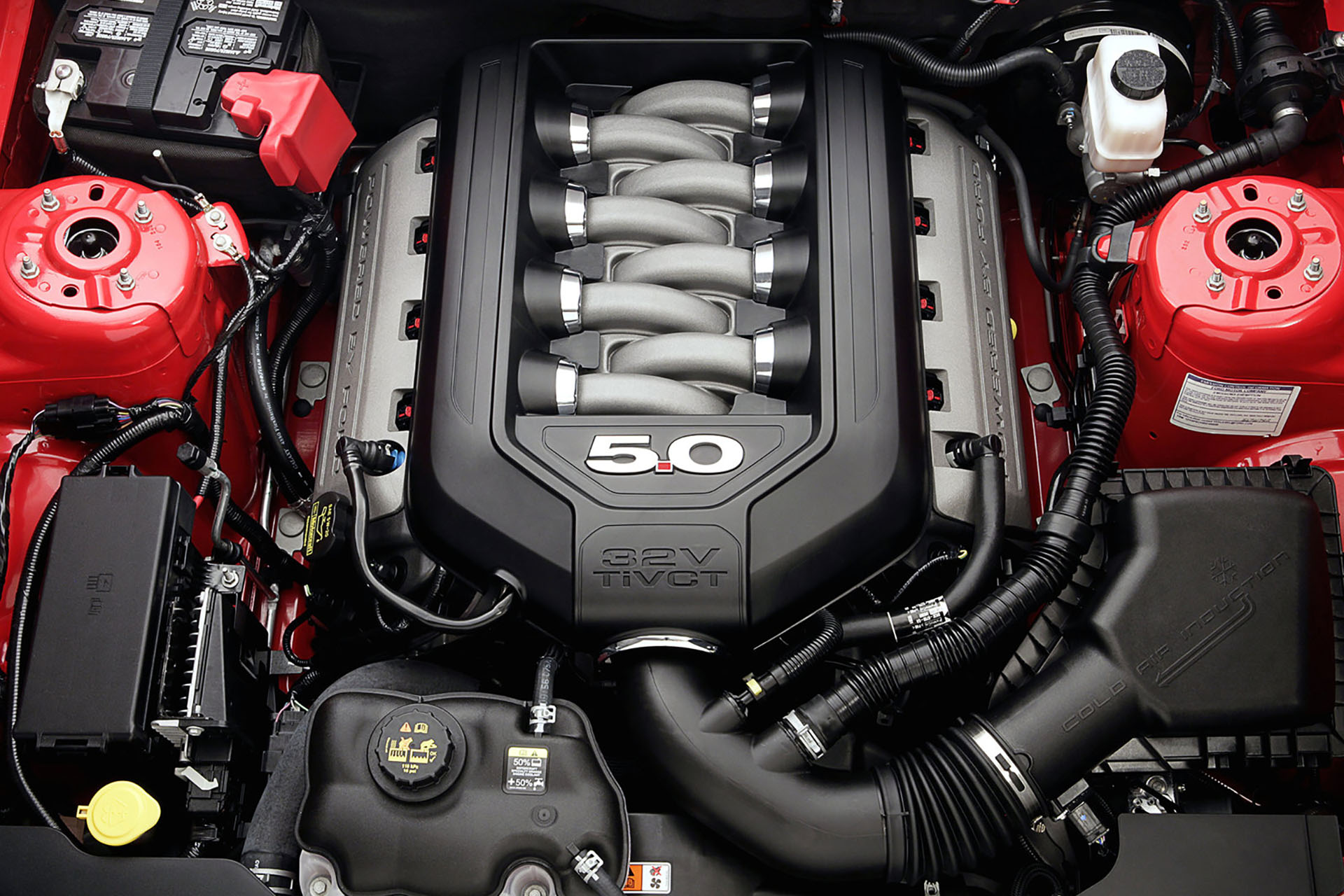Since its release in 2011, the Coyote engine has become a household name with Ford lovers. The modular 5.0L V8 engine has won the heart of both Mustang and F-150 lovers due to its sheer power and speed.
The Coyote engine is the most popular modular Ford engine, especially in the aftermarket. Restomod lovers and hot rod guys typically prefer the Coyote to any other engine type.

The engine was designed in 2010 in response to a growing call for more powerful engines with more fuel economy.
It was named after the first Ford with a four-valve V8 which was a race car driven by AJ Foyt. Foyt raced for Ford between 1965 to 1978. In 1967, Foyt started driving the Coyote 67 – Ford’s first four-valve V8 car. He would go on to race in several Ford racing vehicles known as the Coyote. With the Coyote, Foyt ran 141 races, winning 25.
If the Coyote car was a road beast, the engine named after it has lived up to its reputation. So, what are the things that make the Coyote engine stand out?
It is Ford’s top modular engine.
Modular engines are all the craze with DIY car builders. The company has been making them since the 1990s. Before the Coyote, there was the 4.6L which graced the Mustang GT between 1997 and 2004, the 5.4L Modular engine in the Ford F and E-series between 1997, and many others.
The engines get their name from the way they are constructed. The modular design allows for the engines to be made into different variations depending on the need. The after-effect of this is that modular engines can often be modified in the after-market by simply swapping parts.
The Coyote’s performance as a modular engine is evident in two records that it holds. The first is the 1/8 mile Drag Race World Record which was set n 2018 by the team at Modular Motorsports Racing (MMR) using a modified Coyote engine. The engine clocked 3,500hp, breaking the record for the fastest Ford Modular at that distance with 3.83 seconds at 202.29 mph (326 km/h)
The second is the1/4 mile Drag Race World Record which was set by MMR driver Mark Luton. The record was set by a Coyote-based engine which ran a 5.67-second pass at 265.43 mph (427.17 km/h), making it the fastest Ford-powered vehicle in that distance.
It packs a punch
The first Coyote engines were so powerful that Ford had to figure out how to improve the engine walls. The first generation Coyotes could produce up to 412 hp and 390 pounds of torque.
When compared to other engines in terms of size and output, the Coyote performs admirably well. For instance, the first-generation 5.0L Coyote engine could produce as much power as a 6.4L Hemi with much less displacement.
Part of the reason for the performance of the Coyote is the use of Twin Independent Variable Camshaft Timing (TI-VCT) was an improvement on Variable Camshaft Timing (VCT) technology.
VCT technology was initially designed for better fuel efficiency and lower emissions. They achieved this by changing the camshaft’s speed depending on the engine load and RPM.
With TI-VCT, the camshafts act independently, resulting in an even higher power and torque. While VCT was used on either the exhaust or intake camshaft to manage emissions and power, respectively, TI-VCT allowed both camshafts to work independently of one another.
It can easily be modified.
For fans of restomod, the Coyote engine is like the holy grail. These engines can easily be placed inside the body of older Mustangs in a process known as the Coyote swap.
Coyote swaps are popular with most Mustang lovers. Driving a modern engine in old fox body Mustangs can give you that nostalgic aesthetic with reliable, up-to-date power.
While Coyote swaps can be done DIY if you have the know-how, it is often best to involve a professional with doing them.
The engines themselves are quite easy to modify and upgrade – a function of them being modular engines. You can easily add a few bolt-on elements to increase the performance of the engine. Something as little as adding a cold air intake can make a huge difference.
Coyote engine owners can also participate n Coyote stock events where they can install an OEM staled Ford Coyote crate engine into their cars. The crate engines usually pack a ton of power and are easier to install than making wholesale upgrades.
It keeps getting better.
Although the Coyote engine was first released in 2011, there have been more variations of it recently. The most recent update was in 2018 with the release of 3rd generation coyotes. While still maintaining a 5.0L engine, the new coyote engine posts 460hp and 420 pounds of torque. Better still, it can be tuned beyond those performance levels.
Although third-generation Coyotes have been modified for performance and have port fuel injection, they do not require high octane fuel. On the contrary, they use regular 87 octane fuel with no pinging.
There have also been some specialized Coyote builds. The most popular ones are the Roadrunner, Voodoo, and Aluminator.
Conclusion
Ford definitely hit a home-run with the Coyote engine. It is one of the best car engines available in the world. In the last ten years, four Coyote engines have made it into Ward’s ten best engines – an annual list of the best car engines in the US market.
If you’re looking to do a restomod or rebuild an old Ford Mustang, the Coyote engine should be top on your list of acquisitions. This engine is a guaranteed performance driver and can be tuned to the highest race-car levels.
